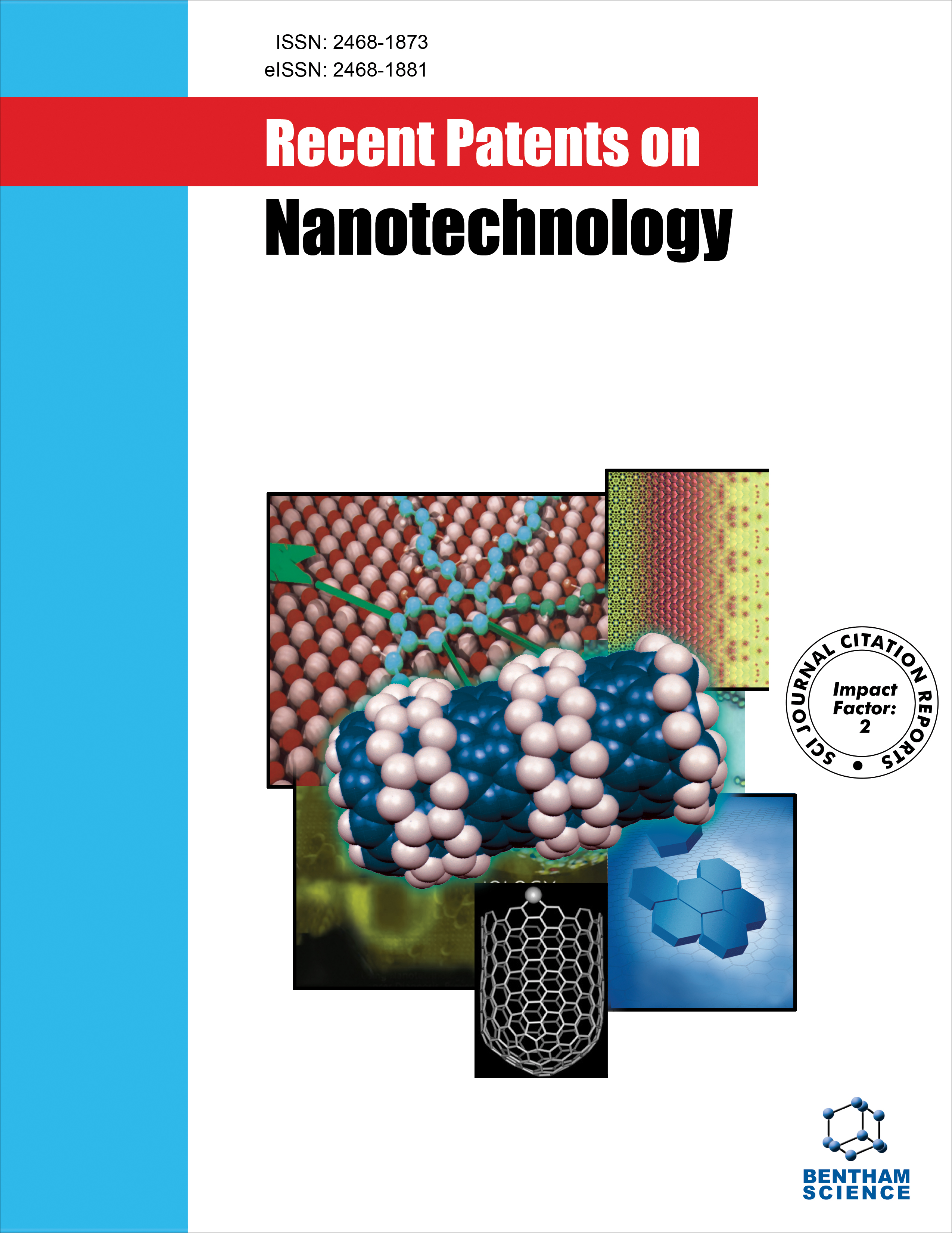- Home
- A-Z Publications
- Recent Patents on Nanotechnology
- Previous Issues
- Volume 10, Issue 3, 2016
Recent Patents on Nanotechnology - Volume 10, Issue 3, 2016
Volume 10, Issue 3, 2016
-
-
Recent Advancement in Cellulose based Nanocomposite for Addressing Environmental Challenges
More LessBackground: Cellulose being the most abundant polymer has been widely utilized in multiple applications. Its impressive nanofibril arrangement has provoked its applications in numerous fields. Recent trends have been shifted to produce composites of nanocellulose for numerous applications among which the most important ones are its use in medical and environmental prospective. This review has basically focused the devel Read More
-
-
-
Recent Development of Chitosan Nanocomposites for Environmental Applications
More LessAuthors: Shahid Ali Khan, Sher Bahadar Khan, Tahseen Kamal, Abdullah M. Asiri and Kalsoom AkhtarBackground: Potable, clean and safe water is the basic need for all human beings. Major portion of the earth is occupied by water, however, this is contaminated by rapid industrialization, improper sewage and natural calamities and man-made activates, which produce several water-borne and fetal diseases. In this review we presented some recent patent for environmental remediation. Methods: Various technologies have bee Read More
-
-
-
Polymer Nanocomposite Membranes for Antifouling Nanofiltration
More LessAuthors: Tahseen Kamal, Nauman Ali, Abbas A. Naseem, Sher B. Khan and Abdullah M. AsiriFouling refers to the unwanted and undesirable attachment of biological macromolecules, inorganic, organic matter, and microorganisms on water contact surfaces. Fouling reduces the performance of devices involving these submerged surfaces and is considered the bottle-neck issue for various applications in the biomedical industry, food processing, and water treatment, especially in reverse osmosis (RO) desalination. In Read More
-
-
-
Effective Role of Magnetic Core-Shell Nanocomposites in Removing Organic and Inorganic Wastes from Water
More LessAffordable and efficient water treatment process to produce water free from various contaminants is a big challenge. The presence of toxic heavy metals, dyes, hazardous chemicals and other toxins causes contamination of water sources and our food chain and make them hazardous to living organisms. The current water treatment processes are no longer sustainable due to high cost and low efficiency. Due to advantageous p Read More
-
-
-
Adsorption Assisted Photocatalytic Removal of Methyl Orange by MgAl2O4-Sb2S3 Composite Material
More LessAuthors: Muhammad Muneeb, Bushra Ismail, Tanzeela Fazal, Abdur Rehman Khan and Mehwish AfziaBackground: The current article is about the water treatment in which colored water contaminated by methyl orange has been used for adsorption assisted photocatalysis. Coupling of photocatalysis with the traditional water treatment processes has been in practice since last couple of years for the improvement of degradation efficiencies, for example, photocatalysis coupled with ultrafilteration, adsorption, flocculation, biologica Read More
-
-
-
Sulfonated Polyimide-Clay Thin Films for Energy Application
More LessBackground: Sulfonated polyimides (SPIs) are considered as the promising alternatives to Nafion as membrane materials for the polymer electrolyte membrane (PEM). They generally exhibit high ionic conductivity, good mechanical properties, excellent thermal and chemical stabilities. The six-membered ring, naphthalenic anhydride-based SPIs, not only exhibit superior chemical and thermo-oxidative stabilities but are a Read More
-
-
-
Synthesis and Characterization of Silver Nanoparticles-Filled Polyethersulfone Membranes for Antibacterial and Anti-Biofouling Application
More LessBackground: The membrane processes are interesting and economical techniques for reuse of municipal and industrial wastewater as well as seawater desalination. However their drawbacks can be resumed in the fouling and biofouling due to the deposition and adsorption phenomenon of the components and the development of biofilm on membrane surface. Several studies have focused on the effect of the incorporation Read More
-
-
-
Bactericidal Activity of Usnic Acid-Loaded Electrospun Fibers
More LessBackground: Usnic acid has been progressively reported in the literature as one of the most important lichen metabolites characterized by a rich diversity of applications such as antifungal, antimicrobial, antiprotozoal and antiviral agent. Particularly, antimicrobial activity of usnic acid can be improved by encapsulation of active molecules in enteric electrospun fibers, allowing the controlled release of active molecule at specifi Read More
-
Volumes & issues
-
Volume 19 (2025)
-
Volume 18 (2024)
-
Volume 17 (2023)
-
Volume 16 (2022)
-
Volume 15 (2021)
-
Volume 14 (2020)
-
Volume 13 (2019)
-
Volume 12 (2018)
-
Volume 11 (2017)
-
Volume 10 (2016)
-
Volume 9 (2015)
-
Volume 8 (2014)
-
Volume 7 (2013)
-
Volume 6 (2012)
-
Volume 5 (2011)
-
Volume 4 (2010)
-
Volume 3 (2009)
-
Volume 2 (2008)
-
Volume 1 (2007)
Most Read This Month
Article
content/journals/nanotec
Journal
10
5
false
en


